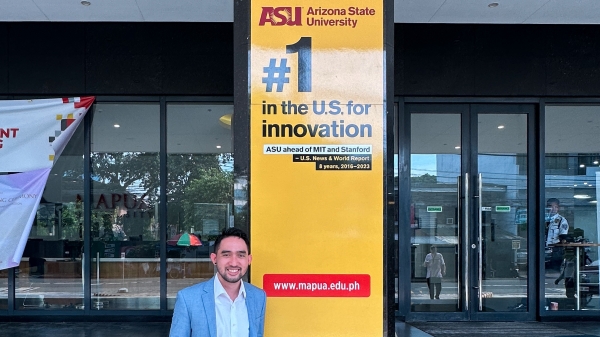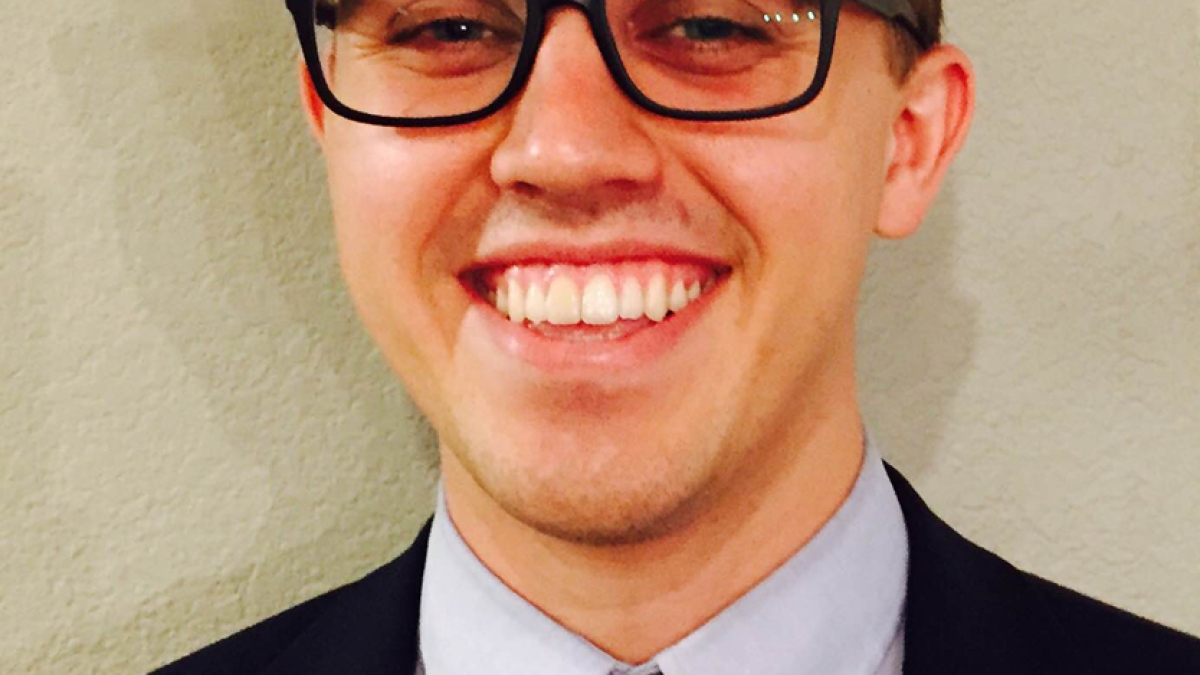Editor's note: This is part of a series of profiles for spring 2016 commencement. See the rest here.
Michael Ashley had no idea what he wanted to study when he was a senior in high school. He knew he liked chemistry and biology. So, when it came time to pick a major, he figured the School of Life Sciences was worth a try. According to Michael, it didn’t take long to decide how he felt about the choice.
“I definitely warmed up to it fast,” said Ashley, who majored in biological sciences (genetics, cell and developmental biology concentration) with a minor in biochemistry. “I’ve always had a passion for science in general, but it was the way the School of Life Sciences (SOLS) felt like a close community within ASU that I fell in love with.”
Once he was hooked on the community, Ashley found many ways to be involved. After a good experience in the SOLS undergraduate mentorship program, he joined as a mentor himself and eventually became one of its most senior members. He also became a Supplemental Instruction leader through the University Academic Success Programs, which led to an opportunity that came to define his undergraduate career.
Ashley joined assistant professor Sara Brownell, associate professor Miles Orchinik and a number of graduate students in their efforts to keep growing the School of Life Sciences BioBridge program. The two-week program provides incoming students the tools and resources they need to succeed in college before their first semester even starts. Ashley took an active part in the execution of the program, helping students acclimate to an active-learning classroom environment.
While Ashley was assisting with BioBridge, he was also busy working as a medical scribe at St. Joseph’s Hospital and Medical Center in downtown Phoenix. There, he watched an emergency-room doctor save a patient’s life — which cemented his decision to pursue the profession himself.
He answered a few questions about his time at ASU before receiving his degree this week.
Question: What was your “aha” moment, when you realized you wanted to study the field you majored in?
Answer: My “aha” moment was in high school when I started studying biology and other STEM subjects. I realized, “Hey, this is pretty cool and I seem to be good at it.” Since then I have only become more interested the deeper I go into my studies.
Q: What’s something you learned while at ASU — in the classroom or otherwise — that surprised you, that changed your perspective?
A: One of the biggest perspective changes I had was when I started working as a scribe at a hospital. As biological sciences major, I have studied and understand the molecular underpinnings of many diseases and conditions. In the classroom, we are fairly far removed from the diseases we study. Seeing and working with patients firsthand made me understand the importance of both research and in medical treatment.
Q: Why did you choose ASU?
A: I chose ASU because they have a fantastic biology program, which has more than adequately prepared me for my future endeavors, provided me with scholarships to help for the expenses associated with college and offers students an extensive support network designed to help students succeed.
Q: What’s the best piece of advice you’d give to those still in school?
A: My one piece of advice would be to take advantage of the many opportunities at ASU. Being a large school, ASU has many opportunities to get involved with research or just to find an on-campus club with people who have similar interests and passions as you do. Either way, ASU is so diverse and offers so many opportunities that there really is something for everyone.
Q: What was your favorite spot on campus, whether for studying, meeting friends or just thinking about life?
A: My favorite spot on campus would have to be Old Main and its lawn. I’ve gone there more than a few times to just relax between classes or to study during the day.
Q: What are your plans after graduation?
A: After graduation, I will be applying to medical school while continuing to work as a medical scribe during my gap year.
Q: If someone gave you $40 million to solve one problem on our planet, what would you tackle?
A: I would like to put the money both into Alzheimer’s research and into care for Alzheimer’s patients. Alzheimer’s seems to be a pretty underserved population in medicine despite the disease becoming more prevalent and the huge emotional and financial tolls it takes on the families of patients.
More Health and medicine
College of Health Solutions medical nutrition student aims to give back to her Navajo community
As Miss Navajo Nation, Amy N. Begaye worked to improve lives in her community by raising awareness about STEM education and…

Linguistics work could improve doctor-patient communications in Philippines, beyond
When Peter Torres traveled to Mapúa University in the Philippines over the summer, he was shocked to see a billboard promoting…

Turning data into knowledge: How Health Observatory at ASU aims to educate public
This is how David Engelthaler described his first couple of months on the job as executive director of the Health Observatory at…
